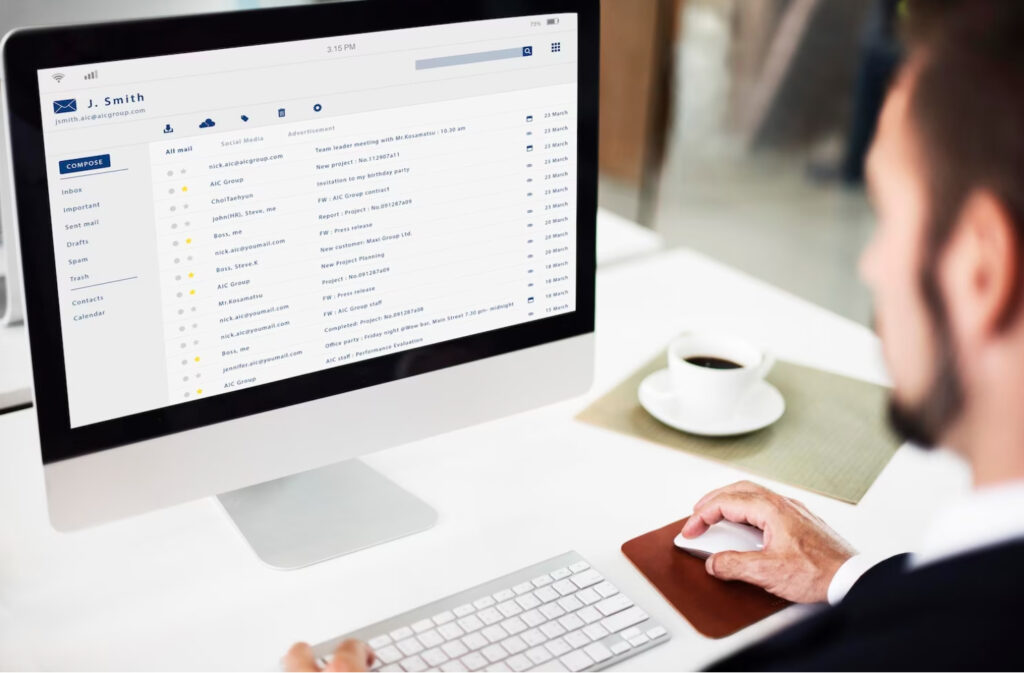Personalized emails play a crucial role in establishing and nurturing strong customer relationships while driving higher engagement rates. In today’s digital age, where our inboxes are flooded with generic promotional emails, personalized communication stands out as a powerful tool for connecting with recipients on a more individualized level. By tailoring email content to suit the specific needs and preferences of each recipient, businesses can create a sense of relevance and build trust, ultimately leading to improved customer loyalty and increased conversions.
The benefits of email customization are manifold. Firstly, personalized emails have a significantly higher chance of capturing the recipient’s attention amidst the sea of generic emails they receive daily. When an email is addressed directly to the recipient, featuring their name or other relevant details, it instantly grabs their attention and creates a personal connection. This initial engagement can increase the likelihood of the recipient opening the email and proceeding further along the conversion funnel.
Secondly, personalized emails demonstrate that businesses value their customers as individuals and understand their unique requirements. By utilizing customer data effectively, businesses can segment their email lists and tailor the content to match the specific interests, preferences, and purchasing behaviors of different customer segments. This level of customization ensures that recipients receive relevant and targeted content, resulting in higher open rates, click-through rates, and ultimately, a better chance of conversion.
Lastly, personalized emails have a direct impact on conversions. When recipients receive emails that address their specific needs, showcase relevant products or services, or offer personalized recommendations, they are more likely to engage with the content and take the desired action, such as making a purchase, signing up for a webinar, or downloading a resource. By providing a personalized and tailored experience, businesses can boost their conversion rates and achieve their marketing goals more effectively.
In the following sections, we will delve into the best practices for creating personalized emails, including collecting and utilizing customer data, segmenting email lists, crafting personalized subject lines, using dynamic content, writing personalized email copy, and testing and optimizing personalized email campaigns. By implementing these strategies, businesses can harness the power of personalization and create impactful email communication that resonates with their recipients.
Best Practices for Personalizing Emails
- Collecting and Utilizing Customer Data:
Gathering relevant customer information is essential for effective email personalization. Here are some tips on collecting customer data:
- Encourage subscribers to provide their preferences during the sign-up process or through preference centers.
- Utilize website tracking and analytics tools to gather data on customer behavior, such as browsing history and purchase patterns.
- Leverage data from previous interactions, including past purchases, survey responses, or customer support interactions.
Once you have collected customer data, here’s how you can leverage it to personalize emails:
- Use customer data to segment your email list based on demographics, interests, purchase history, or engagement levels.
- Personalize email content by incorporating customer-specific details, such as their name, location, or past purchases.
- Create targeted offers or recommendations based on customer preferences or behavior.
- Segmenting Your Email List:
Segmentation allows you to tailor your email communication to different groups of recipients, ensuring relevant and targeted messaging. Consider the following guidelines for effective email list segmentation:
- Segment based on demographics: Divide your email list by age, gender, location, or any other relevant demographic information.
- Segment by behavior: Create groups based on customer actions, such as recent purchases, abandoned carts, or email engagement levels.
- Segment by preferences: Allow subscribers to indicate their interests or preferences during the sign-up process and create segments accordingly.
To implement email list segmentation effectively, consider using the following tools and techniques:
- Email marketing platforms: Choose an email marketing software that provides robust segmentation capabilities, allowing you to easily create and manage segments.
- Automation: Set up automated workflows that dynamically assign subscribers to different segments based on their behavior or preferences.
- Personalized content blocks: Utilize dynamic content blocks within your emails to display different content based on the recipient’s segment.
- Crafting Personalized Subject Lines:
Subject lines are the gatekeepers to your emails. Here’s why personalized subject lines are crucial and how you can create them effectively:
- Personalization grabs attention: Including the recipient’s name or other relevant details in the subject line instantly catches their eye and encourages them to open the email.
- Be concise and compelling: Craft subject lines that are concise, clear, and arouse curiosity or evoke emotions.
- Test and optimize: Experiment with different subject lines and analyze the open rates to identify what resonates best with your audience.
Remember to A/B test different subject lines and track their performance to continuously improve your email open rates.
- Using Dynamic Content:
Dynamic content allows you to customize the email content based on the recipient’s characteristics or behavior. Here’s how you can leverage dynamic content in your emails:
- Personalized product recommendations: Show product recommendations based on the recipient’s past purchases or browsing history.
- Location-based content: Tailor the email content to include location-specific offers or events.
- Countdown timers or live inventory updates: Create a sense of urgency by displaying real-time countdowns or available stock updates.
To implement dynamic content in your emails, consider using email marketing platforms that offer dynamic content capabilities. These platforms allow you to define rules and conditions to display different content variations to specific segments or individuals.
By implementing these best practices, you can create personalized emails that resonate with your recipients, increase engagement, and drive better results for your email marketing campaigns.
Testing and Optimizing Personalized Emails
A/B testing is a method used to compare two or more variations of an email to determine which performs better. Here’s why A/B testing is important in email personalization and how to conduct it effectively:
A/B testing allows you to experiment with different elements in your emails to understand what resonates best with your audience. By testing variations of subject lines, content, calls to action, or other elements, you can identify the most effective strategies for personalization and engagement.
- Subject lines: Test different subject lines to gauge their impact on open rates. Compare personalized subject lines with generic ones to see which approach generates better results.
- Content: Experiment with variations of email content, such as different lengths, tone of voice, or presentation styles. Test personalized content versus more general messaging to determine what drives higher engagement.
- Calls to action (CTAs): Test different CTAs in terms of wording, design, placement, or personalization. Determine which CTAs lead to higher click-through rates and conversions.
Analyzing Engagement Metrics
Tracking and analyzing email engagement metrics is crucial for understanding the effectiveness of your personalized email campaigns. Here’s why it’s significant and how to interpret the data:
Engagement metrics provide valuable insights into how your recipients are interacting with your emails. By monitoring these metrics, you can assess the impact of your personalization efforts and identify areas for improvement.
- Open rates: The percentage of recipients who open your emails. A high open rate indicates that your subject lines and sender name are compelling.
- Click-through rates (CTR): The percentage of recipients who click on a link or call to action in your email. CTR indicates the effectiveness of your content and CTAs.
- Conversion rates: The percentage of recipients who complete a desired action, such as making a purchase or filling out a form. Conversion rates reflect the overall success of your personalized email campaigns.
By continuously testing, analyzing, and optimizing your personalized email campaigns based on engagement metrics, you can refine your approach and achieve better results over time.
Conclusion
Personalized emails are paramount in effective communication and building strong relationships with your audience. By tailoring email content to match the specific needs, preferences, and behaviors of recipients, businesses can establish a sense of relevance and connection. This personalized approach increases the chances of capturing attention, fostering engagement, and ultimately driving conversions.
The strategies and techniques discussed in this blog post provide a roadmap for creating impactful and engaging personalized email campaigns. By collecting and utilizing customer data, segmenting email lists, crafting personalized subject lines, using dynamic content, and conducting A/B testing, businesses can deliver emails that resonate with their recipients on an individual level.
Implementing personalization in emails not only helps to stand out in crowded inboxes but also demonstrates that you value your customers as unique individuals. It shows that you understand their preferences and interests, leading to stronger relationships and increased customer loyalty.
To maximize the effectiveness of personalized emails, continuously monitor engagement metrics and analyze the results. By interpreting the data and making data-driven decisions, you can optimize your email campaigns, refine personalization strategies, and achieve better results over time.
Incorporating personalized emails into your marketing strategy is a powerful way to enhance customer engagement, boost conversions, and differentiate your brand in today’s competitive landscape. Start implementing these strategies and techniques to create personalized email campaigns that deliver relevant and valuable content, strengthen relationships with your audience, and drive the success of your business.


